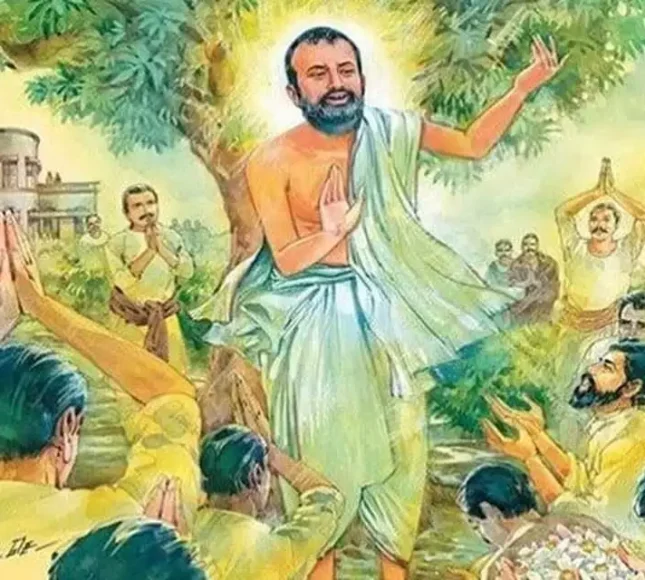Amrit (ambrosia), Sassi (moon), Dhena (wish-fulfilling cow), Lakshmi, Kalpataru (wish-fulfilling tree), Sikhira (the horse) and Sunagar (Dhanwantara) all came out from the ocean, the lord of the rivers, but because of its past actions,it still remains saltish. (Dhanasari Trtlochan, p. 695) Kalpataru is also called Parijata. It was produced when the milk-ocean was churned by god and demons. It was kept in Amaravati, the heaven of Indra.
Once Krishna visited the heaven and on the request of Satyabhama, he brought it to Dwarka after a great battle. The tree returned to heaven after Krishna left this mortal world. Like Surabhi (the cow) this tree fulfilled all the wishes. See: Parijata
References :
1. Kohli, Surindar Singh (ed), Dictionary of Mythological References in Guru Granth Sahib, 1993
Kalpataru
The Guru Granth Sahib, the sacred scripture of Sikhism, is a profound tapestry of spiritual wisdom, ethical principles, and universal truths. Its hymns, composed by Sikh Gurus and other enlightened souls, resonate with teachings that transcend religious boundaries and embrace humanity as one. Among the literary and philosophical treasures embedded in the Guru Granth Sahib are mythological references drawn from diverse cultural and religious traditions, serving as metaphors to illuminate spiritual concepts. One such notable reference is the “Kalpataru,” often referred to as the “wish-fulfilling tree” in Hindu mythology.
The Kalpataru, steeped in ancient Hindu lore, is depicted as a divine tree capable of granting any desire to those who seek its blessings. It is described in texts like the Puranas and celebrated in the mythological narratives of the celestial realm. In the Guru Granth Sahib, this symbol is invoked not to endorse material aspirations but to offer a profound spiritual lesson. The concept of the Kalpataru becomes a metaphor for the Divine, the ultimate source of all blessings and fulfillment.
The hymns of Guru Granth Sahib reinterpret the Kalpataru, emphasizing that true contentment and fulfillment lie not in the pursuit of worldly desires but in union with the Divine. In this context, the wish-fulfilling tree serves as a poetic representation of the Creator’s infinite grace and generosity. The Gurus remind seekers that the Divine provides abundantly for all creation and that spiritual awakening leads to liberation from the cycle of desires.
Through the use of such mythological symbols, the Guru Granth Sahib bridges cultural narratives and spiritual teachings, fostering inclusivity and understanding. The reference to Kalpataru exemplifies the scripture’s universal approach, blending elements from diverse traditions to convey timeless wisdom. It invites individuals to reflect on their inner yearning and recognize the impermanence of material pursuits.
Ultimately, the Guru Granth Sahib transforms the mythological Kalpataru into a beacon of spiritual enlightenment, guiding humanity toward a life of devotion, humility, and harmony. The wish-fulfilling tree becomes a reminder that the ultimate fulfillment springs from divine connection and selfless service



